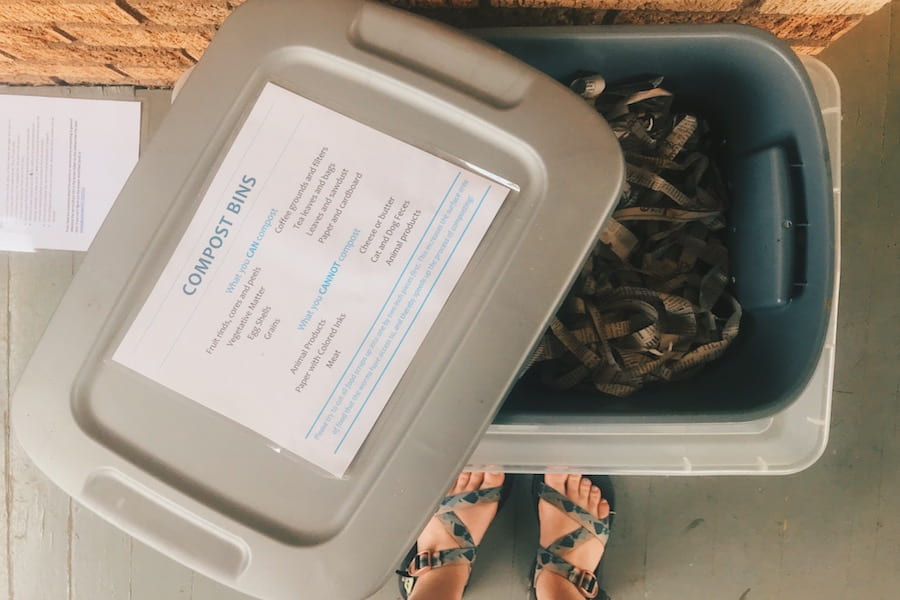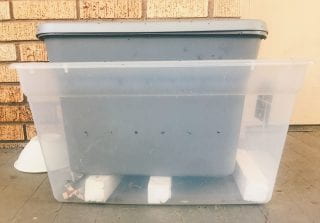The Office for Sustainability recently implemented a vermicomposting system. This type of composting uses worms to decompose foods into nutrient-rich fertilizer.
While various types of worms can be used for this process, OFS is using earthworms. The earthworms can eat vegetables, fruits, newspaper scraps, and coffee grounds. They can’t digest processed foods and animal products (except rinsed eggshells), and they don’t like anything in the cauliflower family. What they can and can’t consume might seem intimidating, but they’re basically vegans who hate broccoli.
These vegan friends of ours are kept in a two-bucket system outside of the office. The
top bucket has holes for airflow and holds the food scraps and newspaper pieces along with the worms. When food is added to the top bin, it is placed under the newspaper. The worms like to stay buried under the newspaper layer so they can process the food scraps. Plus, newspaper absorbs any odor.
The bottom bin catches the juice that comes from the composting process. It is important to have this second bucket so the worms do not drown in the moist environment. Additionally, the composting liquid is nutrient-dense and perfect for watering plants (we recommend mixing one part “worm juice” with 10 parts water.) Once the worms have digested the food scraps, they leave behind a nutrient-rich fertilizer that’s great for gardening. Vermicomposting requires minimal stirring and is relatively low-maintenance as long as the system is built well from the start.
Vermicomposting is just one of many composting options. Hot composting is a quicker process, but requires more dedication and maintenance. This system uses carbon-rich and nitrogen-rich matter for the compost pile. The pile sits in the sun and should be kept moist and at around 130-140 degrees. At this temperature, microbes break down the organic matter at faster rates than other types of composting. Hot composting has to be physically turned, and is generally most effective for larger-scale operations.
Using a tumbler is another composting method that requires less physical exertion than hot composting. A tumbler is a closed bin that turns the compost component
s for you, and it works better for smaller operations.
Cold composting is different option that is small-scale and the most accessible to individuals, aside from vermicomposting. This process is simple and low-maintenance compared to other methods, but it takes considerably longer. Instead of turning the cold composting pile, layers are added to the top.
Interested in other composting systems? Check out this guide.
Our vermiculture setup was built by Arkansas Master Naturalists, who you can contact here.
By Sophie Hill, Zero Waste Coordinator.

